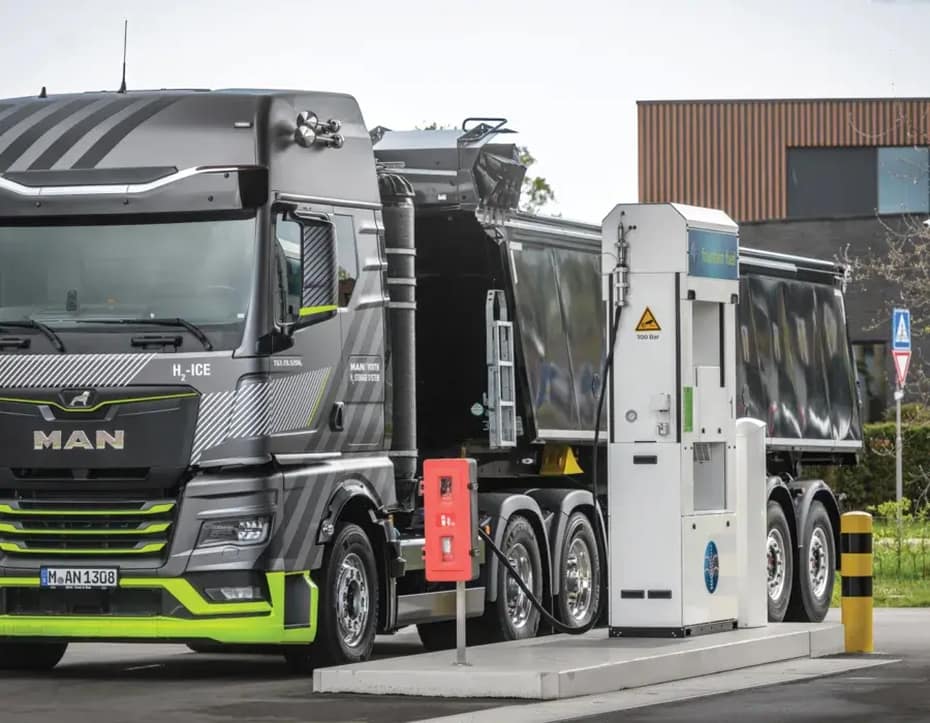Why Early-Stage Government Funding Matters: From Mobile Phones to Hydrogen
Why the narrative of ‘wasted taxpayer money’ on hydrogen—and other breakthrough technologies—doesn’t hold up to history.
Recent commentary has criticised hydrogen project funding as wasteful government spending. The argument follows a familiar pattern: taxpayer money being squandered on unproven technology that may never deliver commercial returns. Yet this narrative ignores a fundamental truth about technological progress. Every transformative technology we now take for granted—from the internet to GPS, from mobile telecommunications to the vaccines that saved millions during the pandemic—emerged from precisely this kind of early-stage government funding.
The question isn’t whether government should fund emerging technologies. History answers that unequivocally. The real question is whether we have the patience and foresight to support breakthrough innovations through the uncomfortable early years before commercial viability arrives, via early-stage government funding.
Early-Stage Government Funding in Semiconductors
My own experience at the European Space Agency provides a telling example. Our work on high electron mobility transistors (HEMTs) in the 1980s seemed esoteric at the time—basic research into heterostructure semiconductor devices that exploited quantum wells in compound materials like gallium arsenide. The technical details mattered less than the broader objective: developing European expertise in advanced semiconductor technology.
When mobile telecommunications exploded in the 1990s, that investment paid dividends. Nokia and Ericsson didn’t emerge as global leaders by accident. They built their dominance on a foundation of semiconductor expertise cultivated through publicly funded research across European institutions. HEMTs became essential components in mobile phone base stations and handsets, enabling the high-frequency, low-noise amplification required for efficient wireless communication.
The UK government continues this tradition through its National Semiconductor Strategy, committing £1 billion over the next decade to compound semiconductor research and development. Current investments include £38 million for the National Graphene Institute and substantial support for compound semiconductor clusters in Wales and Bristol. Critics might question spending millions on materials research, but they’re repeating the same objections raised decades ago about the very technologies that underpin today’s digital economy.
Early-Stage Government Funding and the Internet’s Origins
Perhaps no technology better illustrates the indispensability of government funding than the internet. The Advanced Research Projects Agency Network (ARPANET) wasn’t born from entrepreneurial vision or market forces. It emerged from the US Department of Defense’s concern about communications resilience following a nuclear attack.
Starting in 1969, ARPANET connected university computers using packet-switching technology developed under federal contracts. The project was almost entirely publicly funded through DARPA, with commercial use explicitly prohibited for most of its existence. Federal spending on science reached nearly 2% of US GDP during this period—an investment level considered extravagant by today’s standards.
The returns? Incalculable. Every digital service, every online transaction, every remote collaboration depends on protocols and infrastructure that emerged from this public research programme. Private enterprise didn’t create the internet. It commercialised and scaled a technology that early-stage government funding had de-risked and validated.
Early-Stage Government Funding and GPS: From Military Application to Ubiquitous Service
Global Positioning System technology followed a similar trajectory. Developed by the US military with billions in government investment, GPS began as a defence project with no obvious civilian application. The technology required decades of refinement, satellite deployment, and receiver development before commercial use became viable.
Today, GPS generates approximately $1.7 trillion in economic benefits for America alone. Military GPS receiver contracts continue to flow—$316 million to BAE Systems in 2021—but the broader economic impact dwarfs the original investment. Navigation systems, precision agriculture, logistics, emergency services, and countless smartphone applications depend on infrastructure that would never have emerged from private sector R&D alone.
Early-Stage Government Funding in mRNA Vaccines
The COVID-19 pandemic revealed another striking example of long-term public investment enabling rapid breakthrough. The mRNA vaccines that saved millions of lives didn’t materialise overnight. They emerged from 35 years of research supported by early-stage government funding.
Between 1985 and 2020, the US government invested at least $337 million in foundational research on lipid nanoparticles, mRNA synthesis, spike protein structure, and mRNA vaccine biotechnology. The National Institutes of Health, the Department of Defense, and BARDA all contributed to this research base, primarily through grants to university researchers.
When the pandemic struck, an additional $31.6 billion in public funding supported vaccine development, manufacturing, and procurement. Even Pfizer-BioNTech, despite executives’ claims of independence from government support, relied on technologies licensed from publicly funded research. Without early-stage government funding in fundamental science, these vaccines simply wouldn’t exist.
Early-Stage Government Funding, Battery Technology and Electric Vehicles
Electric vehicle success similarly depends on decades of public investment in battery technology. The US Advanced Research Projects Agency-Energy (ARPA-E) has funded numerous battery innovations through programmes like RANGE and BEEST, investing $36 million in revolutionary EV battery technologies alone.
In the UK, the Faraday Battery Challenge represents £541 million in government investment supporting battery research from laboratory to factory. This programme has backed over 100 start-ups, created a £4.4 billion battery technology ecosystem, and helped the UK achieve fourth place globally for EV battery venture capital investment.
The Battery Innovation Programme, running from 2026 to 2030 with £621 million in funding, will advance next-generation technologies including solid-state, lithium-sulfur, and sodium-ion batteries. Critics might question spending hundreds of millions on battery research, but without early-stage government funding, the automotive industry’s transition to electric vehicles would falter.
Early-Stage Government Funding in Wind and Solar Energy
Renewable energy technologies provide another instructive case. Wind power faced substantial economic hurdles in its early years—expensive, difficult to finance, and competing against established fossil fuel infrastructure. The US government’s Large Wind Turbine R&D programme, administered by the Department of Energy and NASA, combined with a 25% investment tax credit, proved essential in establishing the industry.
Early wind programmes have been characterised as failures because many subsidised turbines didn’t perform as expected. Yet this misses the point. These programmes established the technological foundation for later growth. By 1990, California alone had enough working wind turbines to produce over 2.5 terawatt-hours annually. Today, wind and solar energy supplied 40.8% of power to the UK’s National Grid in 2023.
Research from Berkeley National Laboratory found that wind and solar energy in the US between 2007 and 2015 helped avoid between 3,000 and 12,700 premature deaths, saving $35-220 billion. The monetary value from improved air quality and climate benefits equalled or exceeded the cost of government subsidies.
The Return on Early-Stage Government Funding
The pattern emerges consistently across technologies. UK government analysis shows that every £1 spent on public R&D delivers £8 in net economic benefits over the long term. Public funding crowds in £2 of private investment for every £1 spent. In the six years after receiving their first R&D grant, businesses see employment increase by 21% and turnover grow by 23% compared to similar firms without support.
Public R&D generates larger spillovers than private research because it focuses on fundamental science rather than immediate commercial applications. Publicly funded patents cite scientific papers nearly four times as often as private patents, and they have greater impact measured by subsequent citations. This foundational knowledge enables entire industries that private firms then commercialise.
Oxford Nanopore, developing the world’s first pandemic early warning system using genome-sequencing technology, benefited from UKRI funding and is now a FTSE 250 company. Cobalt Light Systems, which developed liquid screening technology used in over 170 airports worldwide, similarly emerged from public research support facilitated by early-stage government funding.
The Risk of Early-Stage Government Funding Investment
Government investments in emerging technologies inevitably include failures. Not every publicly funded company succeeds. Not every research programme delivers commercial products. Critics seize on these failures as evidence that government shouldn’t “pick winners”.
Yet this fundamentally misunderstands how innovation works. High failure rates characterise all early-stage investment, including venture capital and angel funding. The difference is that public investment targets breakthrough technologies with massive potential spillovers but uncertain commercial timelines—exactly the projects private capital avoids.
Research on failed government-backed ventures demonstrates that even unsuccessful companies generate positive economic outcomes. When Consilient Technologies in Newfoundland closed despite millions in government support, it had created a talent pool of software engineers who subsequently strengthened the local technology ecosystem. Many employees joined other firms like Verafin, contributing to their success. The skills and knowledge developed through public investment don’t disappear when companies fail—they recirculate through the economy.
Bringing Early-Stage Government Funding Back to Hydrogen
Which brings us to hydrogen. Current criticism of hydrogen funding follows precisely the pattern of objections raised against every technology discussed above. Too expensive. Thermodynamically inefficient. No viable market. Better alternatives exist. Why waste taxpayer money on an unproven technology?
The UK government has committed £240 million through the Net Zero Hydrogen Fund, with targets of 10 gigawatts of low-carbon hydrogen production capacity by 2030. The European Union allocated €992 million to 15 renewable hydrogen projects in its second hydrogen-bank auction, with projects expected to produce 2.2 million tonnes of hydrogen over 10 years. Globally, over 2,200 hydrogen projects are in planning, construction, or commissioning phases, with 434 reaching final investment decisions representing $75 billion in committed investment.
Hydrogen faces legitimate challenges. Production remains expensive. Distribution infrastructure doesn’t exist at scale. End-use applications compete with direct electrification. Some proposed applications, like hydrogen for home heating, appear economically unviable. These are valid concerns requiring careful project selection and ongoing assessment.
But these challenges mirror exactly what every emerging technology faces. The internet seemed impractical when ARPANET connected its first four nodes. GPS appeared to be an expensive military indulgence with no civilian value. mRNA vaccines were experimental curiosities for decades. Wind turbines in the 1970s were unreliable and uneconomic. Battery electric vehicles were golf carts with delusions of grandeur.
Early-stage government funding doesn’t guarantee success. It creates the possibility of success. It de-risks fundamental research that private capital won’t touch. It supports the development of supply chains, skills, and knowledge bases that enable commercial deployment when conditions mature. It provides patient capital that can absorb the long timelines between scientific breakthrough and market viability.
For hydrogen, the question isn’t whether current projects face obstacles. They do. The question is whether hydrogen has potential applications where it offers genuine advantages—and whether those applications justify supporting the technology through its difficult early years. The answer appears to be yes.
Heavy goods vehicles, maritime shipping, aviation, industrial processes like steel-making, seasonal energy storage, and grid balancing all present use cases where hydrogen’s characteristics—high energy density, ability to decarbonise high-temperature processes, and suitability for long-duration storage—offer advantages over alternatives. The International Energy Agency projects substantial hydrogen demand growth across these sectors.
Will every hydrogen project succeed? No. Will some funding be wasted on unviable applications? Probably. Will hydrogen fulfil every ambitious target and timeline? Unlikely. But judging emerging technology funding by its failure rate fundamentally misunderstands the purpose of public investment in innovation.
The Patient-Capital Imperative of Early-Stage Government Funding
Private capital excels at scaling proven technologies and optimising existing products. It struggles with long-term, high-risk research where returns are uncertain and spillovers benefit competitors. That’s not a failing of markets—it’s how markets function. Early-stage government funding fills this gap, supporting fundamental research and early-stage development until technologies reach the point where commercial deployment becomes viable.
UK government analysis suggests digital transformation and technology projects generate returns substantially exceeding costs, though payback periods extend beyond typical expectations for technology investment. Most successful AI implementations, for example, achieve ROI within two to four years—significantly longer than the seven to 12 months expected for typical technology investments.
For truly transformative technologies, timelines stretch even longer. The internet required three decades of public funding before commercial explosion. GPS took similar timescales. mRNA vaccines needed 35 years of foundational research. Battery technology required sustained support through multiple generations of chemistry and manufacturing processes. Wind and solar energy took decades to achieve cost-competitiveness.
Critics demanding immediate returns or guaranteed success from hydrogen funding would have cancelled every technology discussed in this article. The mobile telecommunications revolution wouldn’t have happened without compound semiconductor research. The digital economy wouldn’t exist without ARPANET. Pandemic response would have failed without mRNA vaccine research. Electric vehicles would be science fiction without battery development programmes.
The Essential Role of Government in Early-Stage Innovation
Private enterprise deserves credit for commercialising and scaling these technologies. Apple didn’t invent the internet, touch-screens, GPS, lithium batteries, or voice recognition—but it integrated them brilliantly into the iPhone. Tesla didn’t invent electric motors, lithium-ion batteries, or solar panels—but it created compelling products that accelerated EV adoption.
Yet none of this commercialisation would be possible without the foundation of publicly funded research that preceded it. Mariana Mazzucato’s research found that nearly 90% of the 100 most important innovations from 1971 to 2006 depended heavily on government research support. Vannevar Bush, outlining the post-war framework for government support of research, stated it clearly: “Basic research is the pacemaker of technological progress.”
The case for government funding of emerging technologies isn’t ideological. It’s pragmatic. We fund early-stage research because no one else will, because the spillovers benefit society broadly, and because the returns—when they arrive—transform entire economies. Every £1 invested generates £8 in economic benefits. That’s not waste. That’s the bargain of the century.
Hydrogen funding will face setbacks. Projects will fail. Money will be spent on approaches that don’t pan out. That’s the nature of innovation. The relevant comparison isn’t between hydrogen funding and a risk-free alternative—it’s between hydrogen funding and the opportunity cost of not developing technology that might prove essential for decarbonisation.
The technologies we take for granted today exist because previous generations had the foresight to invest in uncertain futures. The mobile phone in your pocket, the internet connecting you to the world, the GPS guiding your journey, the vaccines protecting your health—all emerged from patient, sustained, public investment in early-stage research.
The complaint that hydrogen funding wastes taxpayer money ignores this entire history. If we had listened to similar critics in the 1960s, we wouldn’t have the internet. If we had heeded them in the 1980s, we wouldn’t have GPS. If we had accepted their arguments in the 1990s, we wouldn’t have the pharmaceutical innovations that transformed cancer from a death sentence to a manageable condition.
We should debate which hydrogen applications merit support, how to structure funding mechanisms effectively, and what metrics indicate progress. But dismissing hydrogen funding as inherently wasteful ignores everything we know about how breakthrough technologies emerge. Early-stage government funding isn’t an indulgence. It’s essential. History proves it conclusively.


